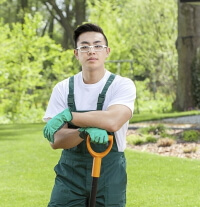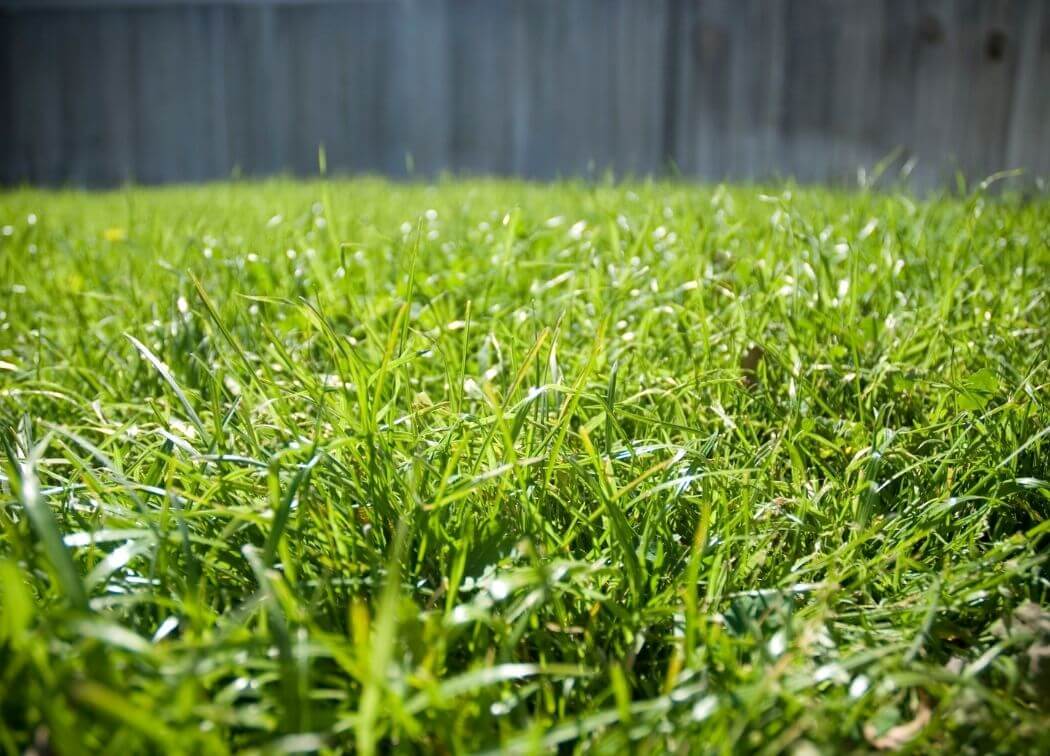If you have been searching for ways to find out how to kill Bermuda grass because it’s already taking over your lawn, then you’ve come to the right place.
The best way to kill Bermuda grass is to do any of the following activities: choke, solarize, or use a selective herbicide. It is known however that Bermuda grass is EXTREMELY difficult to control since it grows fast and covers lawns quickly.
Please read this article to know the effective methods to kill Bermuda grass and prevent it from invading your other plants.
Why Do I Need to Kill Bermuda Grass?
Before anything else, we have to understand why we have to remove the Bermuda grass. After all, there’s a reason why it is called devil’s grass.
Aside from lawn grass, Bermuda grass can also be an invasive weed. It becomes more difficult to control when cultivating tall fescue and zoysia lawns.
In the latter situation, we will need to perform selective herbicide (like weed and feed), so our wanted plants won’t be harmed.
Bermuda grass can also be quite the menace in flower beds, which is why we have to kill Bermuda grass weeds.
Effective Methods in Killing Bermuda Grass
There are both natural and chemical methods to solve the invasion of Bermuda grass. Here are some of the best ways to do it:
#1 Bermuda Grass Killer
Did you know that herbicides are great for controlling perennial grassy weeds? We would recommend some of the best Bermuda grass herbicides that we know of below.
Ornamec Over-the-Top Grass Herbicide

This herbicide is designed to control and maintain landscape beds, and what we love about it is the active ingredient already does wonders for as short as five days.
Not only that, but it also reduces the risk of ornamental plant injury, which is perfect if you are cultivating flower beds.
You can expect that those pesky Bermuda grass will be gone in as little as two to three weeks.
To use this herbicide, it is recommended to mix 8-10 ounces of Ornamec to a gallon of water.
Apply this to the Bermuda grass in your lawn through manual spraying or backpack sprayers.
Fusilade II Herbicide
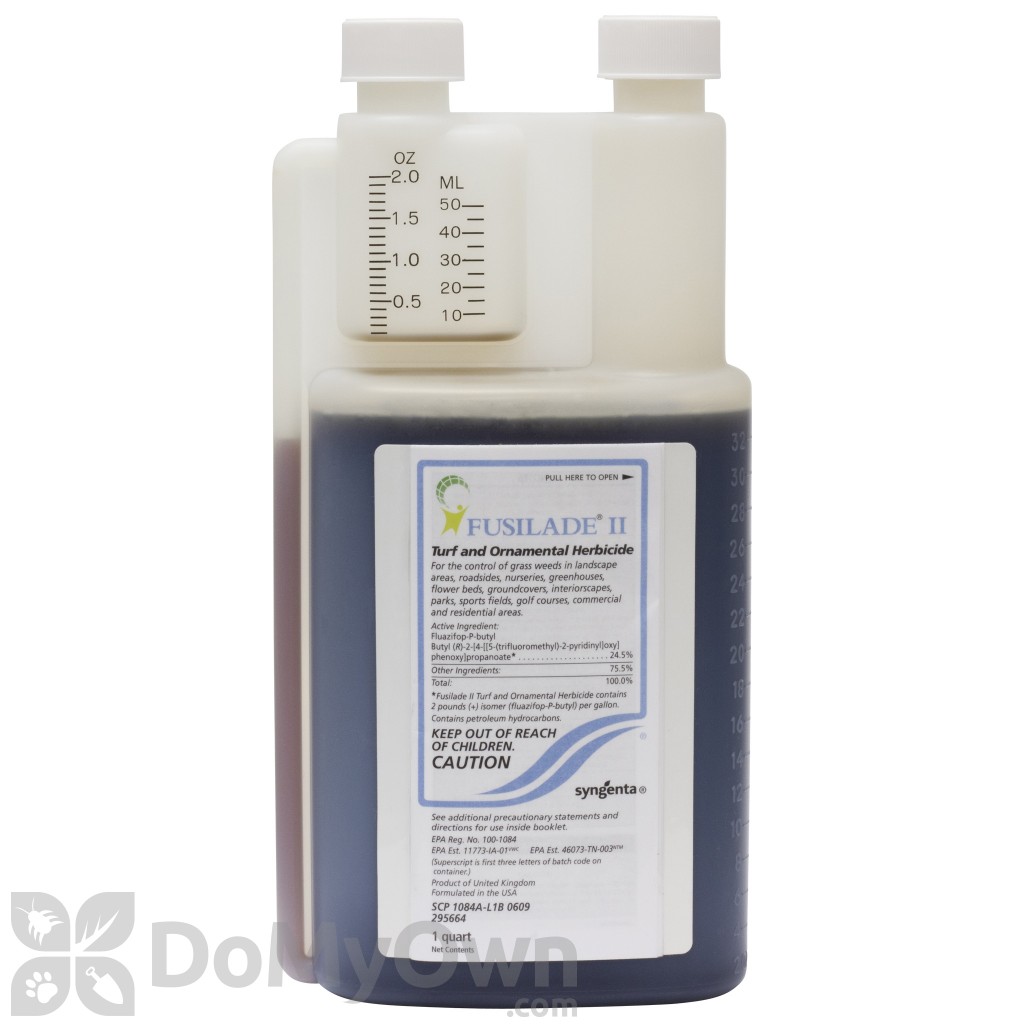
If you control Bermuda grass weeds in larger areas and crops, we recommend Fusilade II Turf and Ornamental Herbicide.
Fusilade II controls the growth of perennial and annual grass weeds in turf and landscaped areas.
We appreciate this herbicide because it can be applied as a spot treatment or over-the-top application, and it still won’t damage the ornamental plants around it.
However, one downside is that it can only stand up to the rain after one hour of application, so it is best to apply it during spring and fall.
Vinegar Solution
Vinegar is the way to want a natural grass killer for your Bermuda grass.
This is because vinegar contains acetic acid, which absorbs the moisture from the weed grass, depriving them of their growth.
To do this, apply a 10% vinegar solution to the Bermuda grass. This natural grass killer is effective, not to mention organic.
However, one downside of this Bermuda grass killer is that it will also affect other grasses, even if those are plants that you want.
This is because vinegar solution is a non-selective grass killer. When you get rid of Bermuda grass using this method, it will also affect your other lawn grass.
Roundup Weed and Grass Killer

Round-Up is a concentrate that contains glyphosate. This chemical has a reputation as an effective killer of a Bermuda grass weed.
If your yard has some tough grass or weeds that did not go away after using other methods, Round-Up is an effective alternative.
It eliminates the grass up to its roots, preventing re-growth. A systemic herbicide such as this is absorbed through the foliage and kills the roots of the Bermuda grass.
We also love this because it has FastAct Technology, which means you will begin to see results in your yard for as little as 9 hours.
If you also want to prevent the growth of the Bermuda grass before even planting, you can also use this as a ground preparation.
This makes the soil condition unsuitable for a weed to grow in. It’s pretty amazing, right?
One thing to note about Roundup is that it is only rainproof for about 30 minutes, so it’s best to apply it during summer.
Monterey Turflon Ester
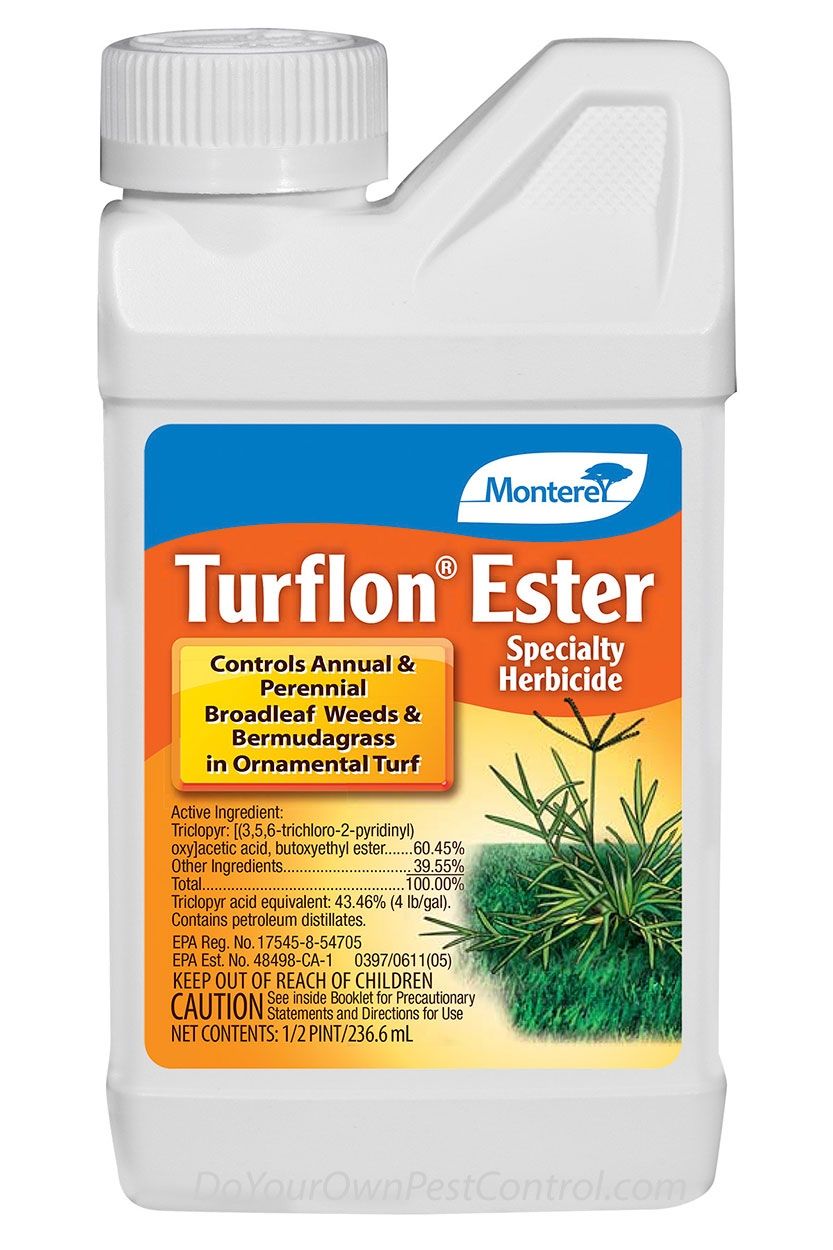
With over 60% of Triclopyr controls, it’s no wonder that Turflon Ester can control and remove the growth of Bermuda grass.
It specifically targets clovers, oxalis, and Bermuda grass weeds in your lawns. When you are using Turflon Ester, it is recommended that you do not re-seed for three weeks after.
We love this herbicide because it can be applied to a large ground area or spot treatment.

#2 Solarization
As the name suggests, solarization is a method the sun rays use in killing Bermuda grass.
Of course, it is best done during the summer seasons since this is the time when direct sunlight is abundant, and the soil heats faster.
What happens here is the sun’s heat combined with the soil heat “bake” Bermuda grass until they are killed.
Follow these instructions to perform solarization on the Bermuda grass:
- Mow the Bermuda grass above ground level: This is our preparation stage. By doing this, we are left with less growth to solarize, making the solarization work faster.
- Cover the Bermuda grass with clear plastic sheets: These plastic sheets work like a magnifying glass for the solar heat to effectively bake the Bermuda grass.
- Anchor your clear plastic sheets: We recommend using heavy-weight objects, such as rocks or bricks to secure loose parameters. This will also help ensure that the sheets stay on the Bermuda grass even if there is wind.
- Retain the plastic sheets: We recommend that you NOT remove the clear plastic tarp for about a month and a half. This will be enough time for the solar heat rays of the sun to effectively bake the weed grass.
#3 Cultivation
Cultivation is a process wherein the soil will be plowed up to a depth of six inches. This method aims to remove the underlying roots of Bermuda grass.
Since the roots of Bermuda grass are not heat-tolerant, they will die when left in the sun. We recommend this method during the summer months when the sun is strongest.
Did you know that underground roots are one of the most pervasive causes of a Bermuda grass invasion?
To make sure that we get rid of Bermuda grass, we have to remove everything, including their hidden roots.
We recommend that you repeat the cultivation of your yard every other week.
If you need more time to get rid of Bermuda grass, repeat the process for as long as it takes to eliminate the grass.
This will ensure that all rhizomes and stolons of the Bermuda grass are removed. These are underground stems that can cause the regrowth of the weed grass.
#4 Mulching
Soil mulching, or mulching, is a process wherein we will place material on top of the soil to protect it.
Mulching is used as a Bermuda grass killer while keeping your other plants alive and ensuring access to moisture and other needed nutrients.
The best mulching material is landscaping fabric. If you don’t have one, we can always use a piece of cardboard.
We will discuss the instructions for both methods below.
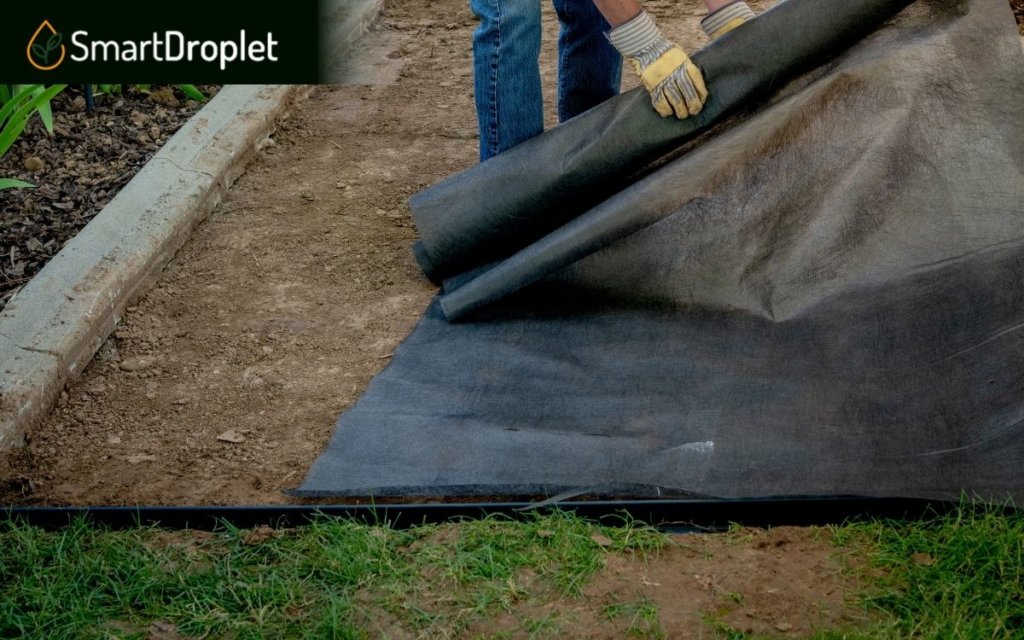
Mulching Through a Landscaping Fabric
- Spread the landscaping fabric over the lawn area where the Bermuda grass is.
- Cut out holes for wanted plants: If you are also taking care of other plants such as fescue grass. It will allow them to thrive while the Bermuda grass weed is prepared for mulching.
- Spread a mulch, sand, or gravel layer over the fabric.
- Scan the perimeter of your lawn: This ensures no Bermuda grass is spreading out of the landscaping fabric.
- Monitor regularly: We estimate that the weed will be contained within two months. If it has continued to spread, we advise you to contact a lawn expert to assist you in using the landscaping fabric.
Mulching Through Cardboard Pieces
Remember, the goal of mulching is to deny sunlight to the Bermuda grass weed in your lawn.
In this way, the grasses will not perform photosynthesis and will inevitably die out. Cardboard pieces are another best material to be used to mulch.
- Reduce the density of the Bermuda grasses. This can be done by mowing to reduce the top growth or using a weed-eater.
- Cover the mulch area with compost. A half-inch layer would suffice to start the biological activity.
- Put the cardboard boxes. Before putting them, you have to flatten them first to ensure that the Bermuda grass won’t get any sunlight. Two appliance cardboard would be enough.
- Anchor the cardboard pieces over the mulch areas. This will ensure that new growth of the Bermuda grass will be prevented in your lawn. You can utilize Sod Staples to do this.
- Wet the cardboard and apply it to mulch. Again, the mulch can be sand or gravel as long as it holds down the cardboard. The goal is to cover your yard to prevent re-growth and invasion.
- Do NOT remove the cardboard pieces for four months. It would be best if you didn’t do anything to the mulched areas for the time being. This will ensure that all Bermuda grass is chocked out entirely.
How to Remove Bermuda Grass Weed in a Zoysia Lawn
Removing any other grasses that weed on your plants is part of lawn care, but ensuring that a nearby plant would not be affected in the process.
A Bermuda grass is a perennial type, and so is Zoysia grass. Removing Bermuda grass can be labor-intensive because they are in the same variety.
The herbicide application must be accurate and careful, as we are only getting rid of one type of grass.
We advise you NOT to use solutions such as Bayer’s Fenoxaprop-p-ethyl, as it contains a chemical that harms the other plants in your lawn.
Instead, opt for a herbicide such as Fusilade II. Even though it would not work as fast as Bayer’s product, it would little to no damage to your Zoysia grass.
We love Fusilade II because it enhances Zoysia grass by up to 20% while reducing the cover of Bermuda grass by up to 28%.
Just remember, Fusilade II must be applied with a high-quality non-ionic surfactant to ensure that your Zoysia receives its needed moisture.
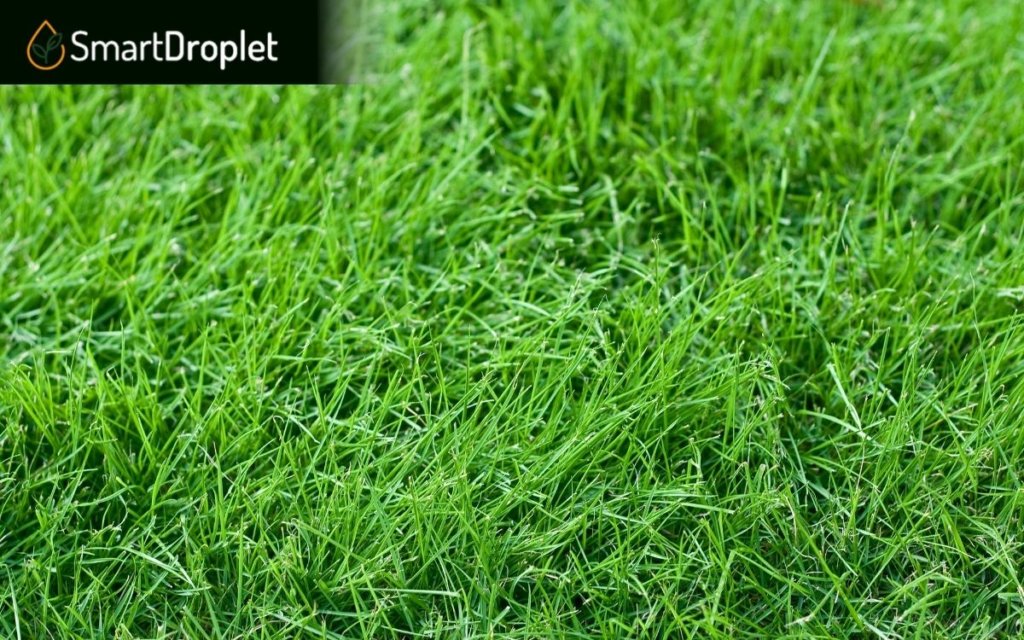
How to Get Rid of Bermuda Grass and Its Roots in a Fescue Lawn
If you are taking care of fescue lawns, you know how difficult removing a Bermuda grass weed from your wanted grass is.
Don’t worry; it is not impossible. Follow the steps below to ensure that even the live roots are killed in the ground.
#1 Mow Fescue Lawn
The first step to getting rid of the Bermuda grass is to trim your fescue grass from a higher height.
This will establish the perfect conditions for your fescue to gain an advantage over any other grasses in your yard.
A height of 2-3 inches would suffice. The result will be taller fescue lawn grass which will reduce the chances of the Bermuda grass from receiving its needed sunlight.
#2 Use a Bermuda Grass Killer
The next step to taking care of your lawn is finding a suitable herbicide that will reach the rhizomes and stolons of the Bermuda grass in the soil.
These are the “nutritional reserves” of the Bermuda grass, which is why they can continuously invade any plant on your lawn.
A systemic application of the herbicide is necessary, and we also advise that you use weed killers such as Ornamec, Roundup, or Turflon Ester.
To use Turflon Ester, mix 1/4 – 1/3 oz in 2 gallons of water for uniform coverage.
To effectively control the Bermuda grass, we advise you to reapply every month.
Three to four times of application will suffice to result in dead grass. Do not forget that you will have to water the lawn 24 hours AFTER applying the herbicide on your lawn.
How to Eliminate Bermuda Grass in Flower Beds
It is not a surprise to see your plant surrounded by unwanted weeds, especially if you are from hotter regions where Bermuda grass thrives.
These drought-tolerant grass are known to spread fast, and we don’t want our plant to be deprived of the moisture and nutrients it needs.
It would require manual weed removal in a flower bed since it would be difficult to mow. To do that, follow the instructions below:
- Pull out roots of Bermuda grass. To do this, you will have to grab the ends of the Bermuda grass stolons and pull them back from the direction they are spreading.
- Cut off the stolons. This will ensure that they will not regrow in the soil. Sift through the ground to remove the grassroots of the Bermuda grass.
- Double-check the ground for any leftover stolons and rhizomes. Check the soil for any reserves left of the Bermuda grass, as this can be the new cause of invasion around your plant.
If manual removal of the Bermuda grass does not work on your flower beds, then we suggest that you use a chemical solution instead.
However, we recommend that you utilize a fine spray for your garden sprayer and hold the sprayer’s nozzle as close to the target weeds in the soil.
This would minimize the chances of your other plants being harmed by the solution.
How Do I Prevent Spread of Bermuda Grass Weed?
As they always say, prevention is better than cure, and the same goes for Bermuda grass. We don’t want our growing season to be affected by weeds, right?
Here are some tips that you can use in preventing the invasion of this stubborn weed.
Tip #1: Early Manual Removal
If you already see some Bermuda grass showing up on your lawn, especially during summer, it’s best if you remove the whole weed early, including the stolons and rhizomes.
In this way, you won’t have to get rid of more Bermuda grass later since an early removal would prevent an invasion.
The dead grass must also be disposed of properly. Please don’t leave it in the soil after your pull it out.
Tip #2: Cultivate Your Soil Regularly
Aside from the usual benefits of cultivation, it also ensures that your soil is not hiding any rhizomes or stolons.
Especially during prolonged dry months, break up your lawn with a garden spade to get rid of any grassroots.
Tip #3: Mow High
Mowing your lawn close to the ground will leave it vulnerable to a spread of Bermuda grass as they have an abundant supply of sunlight.
Conclusion
And that’s how you get rid of Bermuda grass on any lawn!
Many people suffer from bermudagrass issues, so it’s no surprise many look up guides to solve it.
Thank you for reading the article, and we hope your gardening experience will be much improved and more enjoyable!
Happy gardening!

